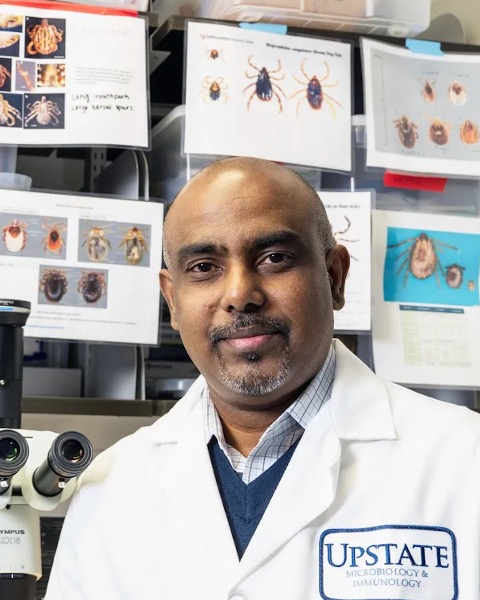Program Symposium
Science Policy
Community-engaged tick surveillance: A public health tool for policymakers and public health departments to make informed decisions on deer management, tick control, and education

Saravanan Thangamani
Professor
SUNY
Syracuse, New York
Presenting Author(s)
Ticks continue to expand their geographic range over time. As a result, the human encounter with ticks will also continue to change. Implementing effective tick control programs requires accurate data on when and where humans encounter ticks. Since 2019, we have been tracking human-tick encounters through a community-engaged tick-testing program [ Hart et al., 2022; www.nyticks.org], where we receive ticks from the general public they encountered and test for 17 tick-borne pathogens. In addition to sending ticks, the tick submitter completes an online form providing information on when and where the ticks were encountered. In total, we collect 42 unique data for each tick. These data are used to develop a publicly available interactive dashboard to visualize and track the emergence of tick and tick-borne diseases in real time [www.nyticks.org; www.tickmap.org]. Our community-engaged tick surveillance program has become a powerful community health tool that allows individuals to assess and track tick activity and the risk of tick-borne diseases in New York. In addition, our human-tick encounter data is a conduit to disseminate information to the community, county/state health departments, clinicians, and researchers to 1) implement /develop community outreach educational programs; 2) develop/implement tick control programs; 3) aides clinicians to make informed decision/provide clinical care. Working together with County and City health departments, we can develop a risk map based on our tick-human encounter data (zip-code level and in some cases, neighborhood/town/village level) to make actionable, evidence-based policy decisions on tick control, education, and deer management.

.png)
